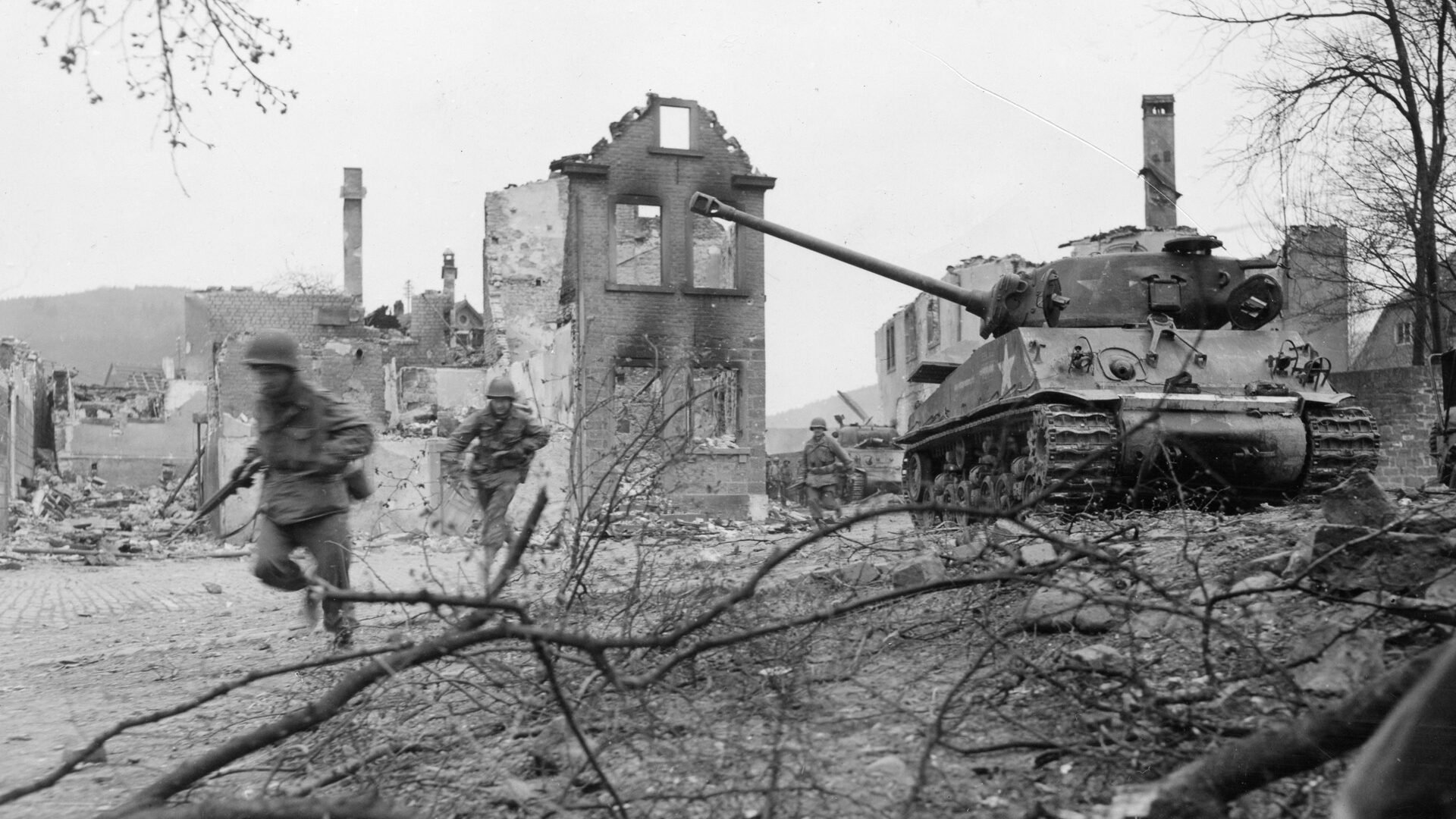RARE! WWII Hurtgen Forest & Rhine "Otis C. Wells" 5th Armored Division 22nd Armored Engineer Battalion Named U.S. Soldier Combat Bible
























RARE! WWII Hurtgen Forest & Rhine "Otis C. Wells" 5th Armored Division 22nd Armored Engineer Battalion Named U.S. Soldier Combat Bible
Comes with a hand-signed C.O.A. and a detailed document with additional research
This extremely rare and museum-grade World War II U.S. soldier’s personal bible was carried by Otis C. Wells (17-259-385) of Company A. of the 5th Armored Division - 22nd Armored Engineer Battalion. This heavily used and worn WWII soldier’s bible was carried into combat and saw action in some of the most famous battles of World War II in the European Theater including the assault on the Siegfried Line, Hurtgen Forest, Rhine at Wesel.
What makes this bible very special is that this bible was carried by Otis C. Wells (17-259-385) of Company A. of the 5th Armored Division - 22nd Armored Engineer Battalion during his entire length of combat during WWII. This bible was given to Otis C. Wells while still in training at Camp Chaffee in Alabama and was carried with him to France and Germany.
Full Combat Timeline of the 5th Armored Division - 22nd Armored Engineer Battalion:
The division landed at Utah Beach on 24 July 1944 under the command of Major General Lunsford E. Oliver, and moved into combat on 2 August, driving south through Coutances, Avranches, and Vitré, and across the Mayenne River to seize the city of Le Mans, 8 August. Turning north, the division surrounded the Germans in Normandy by advancing, through Le Mêle-sur-Sarthe liberated on 11 August, to the edge of the city of Argentan on 12 August—8 days before the Argentan-Falaise Gap was closed.
Turning Argentan over to the 90th Infantry Division, the 5th Armored advanced 80 miles to capture the Eure River Line at Dreux on 16 August. Bitter fighting was encountered in clearing the Eure-Seine corridor, the second big trap in France. The 5th passed through Paris 30 August to spearhead V Corps drive through the Compiègne Forest, across the Oise, Aisne, and Somme Rivers, and reached the Belgian border at Condé, 2 September.
The division then turned east, advancing 100 miles in 8 hours, and crossed the Meuse at Charleville-Mézières, 4 September. Racing past Sedan, it liberated Luxembourg City on the 10th and deployed along the German border. The reconnaissance squadron of the division sent a patrol across the German border on the afternoon of 11 September to be the first of the Allies to cross the enemy frontier. On 14 September, the 5th penetrated the Siegfried Line at Wallendorf, remaining until the 20th, to draw off enemy reserves from Aachen.
In October it held defensive positions in the Monschau-Hofen sector. The division entered the Hurtgen Forest area in late November and pushed the enemy back to the banks of the Roer River in very heavy fighting. On 22 December it was withdrawn to Verviers and placed in 12th Army Group reserve.
Crossing the Roer on 25 February 1945 the 5th spearheaded the XIII Corps drive to the Rhine, crossing the Rhine at Wesel, 30 March. The Division reached the banks of the Elbe at Tangermunde, 12 April—45 miles from Berlin. On 16 April, the 5th moved to Klotze to wipe out the Von Clausewitz Panzer Division and again drove to the Elbe, this time in the vicinity of Dannenberg. The division mopped up in the Ninth Army sector until VE-day.